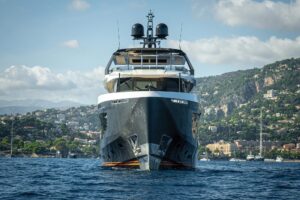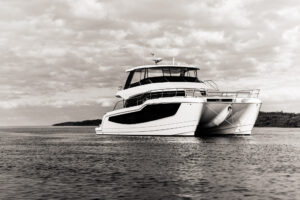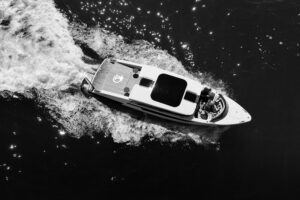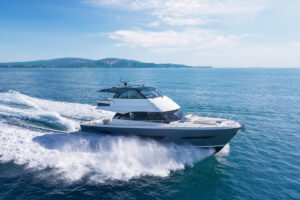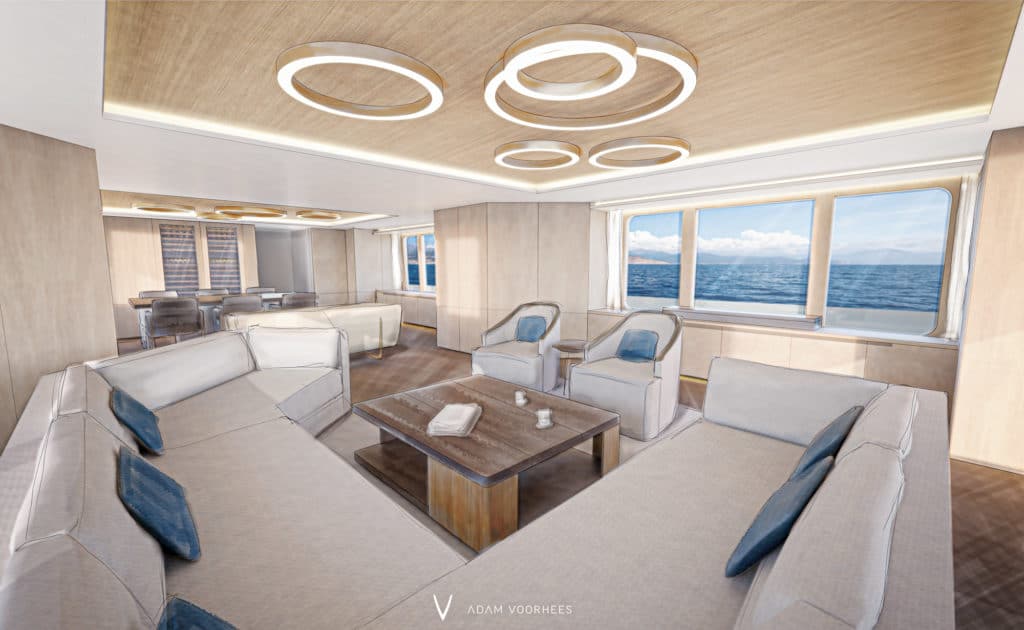
Leon de Haas, the project manager for Project Ragnar, is about as busy as a man can get. Two weeks after the 223-foot converted icebreaker launched in February, he was juggling a beehive of activity, including three companies alone for the interior’s details. The 2,450-gross-ton Ragnar, formerly a multipurpose support/supply vessel, looked nearly nothing like she did almost three years ago, when she entered Icon Yachts’ shed.
Her decidedly commercial profile is erased, replaced with a still-imposing but softer-looking explorer silhouette. She also has a painstakingly detailed interior and a fascinating assortment of land and sea toys.
“Basically, we ripped everything out and made everything new,” de Haas says. “We don’t call it a refit. We call it a conversion.”
So does Bureau Veritas, which is classifying Ragnar with a hull rated to Ice Class 1A Super, one of the highest ice-class notations. It’s a first for yachting. The vessel will be able to operate in subzero temperatures and break through ice nearly 10 feet thick.
Radical transformations like Ragnar’s are rare, but owners regularly give existing yachts comprehensive makeovers to suit their vision. It’s a way to flex creative muscles while benefiting from a shorter timetable and lower costs than a new build offers.
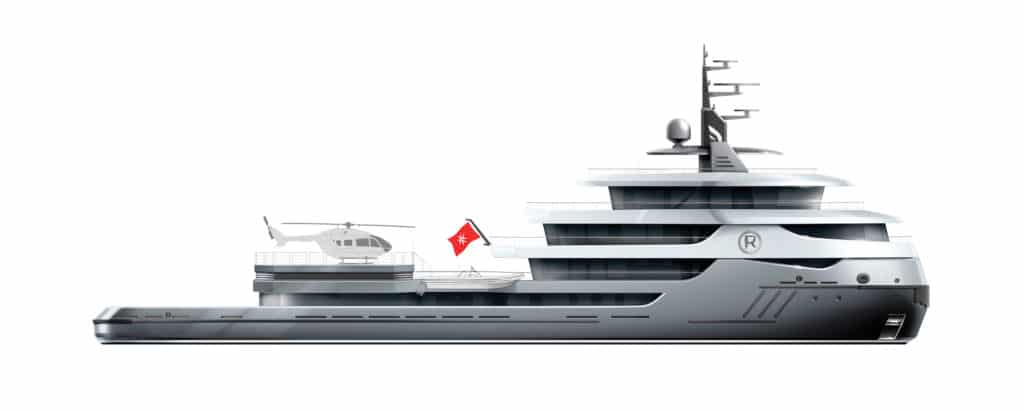
Consider the two Broadwater refits that designer Adam Voorhees handled for the same owner. The first refit took place over seven months in 2017 at Lauderdale Marine Center in Florida. The ex-Blue Moon, a 165-foot Feadship from 1990, wasn’t intended to be gutted, but she ended up that way “because we realized it would constrain the vision,” Voorhees says. In fact, they realized “there’s truly no way to utilize the existing architecture” to live the way the owner wished. He didn’t want parallel walls or right angles—not even mirror images to port and starboard. “It was a very aggressive way to do a refit.”
The new, casually elegant, modernized Mad Men vibe is just what the owner wanted. Chevron patterns in oak lie underfoot, for example, while hundreds of aluminum pieces comprise a mural in the spiral stairway.
With the second Broadwater refit—currently at Royal Huisman—the owner liked the original architecture of the 171-foot ex-Rasselas, a Feadship. However, a lot is still changing.
“Rasselas was a very beautiful, classic Feadship, so we’re just enhancing her,” Voorhees says. A 13-foot stern extension will create a beach club and expand the aft deck. A redesigned sun deck will have a larger hot tub, a bar and a day-head. Inside, the gentleman’s-club ambience with dark mahogany is gone, replaced with a more modern brushed oak, black walnut and fumed eucalyptus. Bronze and stone help set the mood.
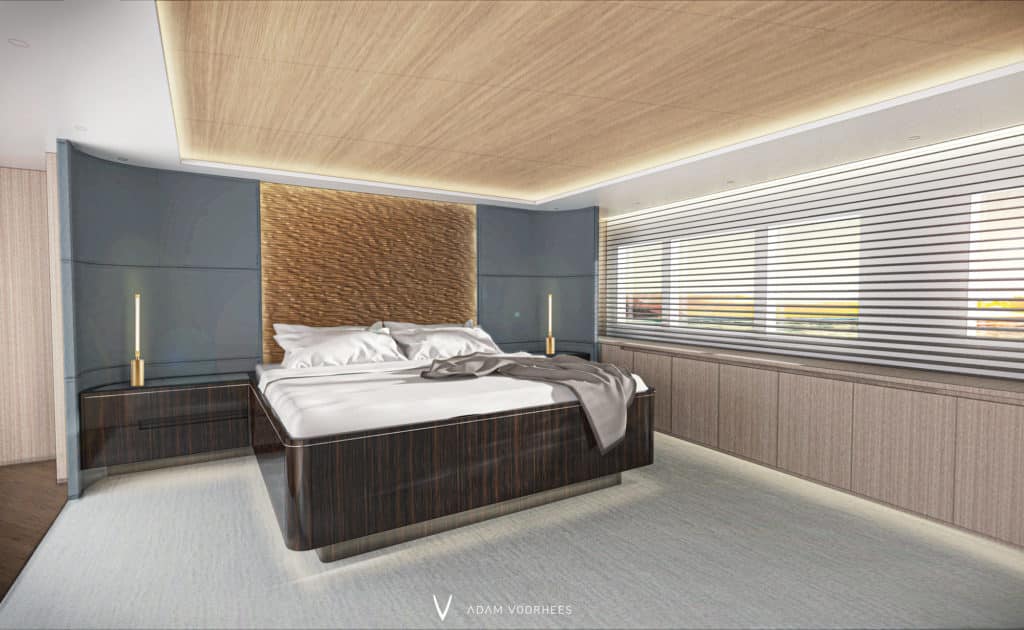
Another recent project is Marala, delivered in 1931. The 194-footer arrived at Pendennis’ Falmouth, England, shipyard this past August for an 18-month restoration. Remarkably, she’s relatively true to her original layout and has her original MANs in the engine room. But she requires some new steel and is undergoing superstructure modifications to return her styling more to what Charles E. Nicholson originally penned. Marala also is gaining new domestic and electrical systems.
“We are quite well-known for classic yachts,” says Mike Carr, Pendennis’ joint managing director, noting the yard’s work on Fair Lady, Haida 1929, Malahne and Shamrock V, to name a few. That background is a major reason why Marala’s owner chose the yard, and why London-based interiors studio Muza Lab is working closely with the in-house staff: to balance respecting early 20th-century character against the challenges of piping and ballast, among other technical hurdles.
Even with all of the classic-yacht refits and restorations that Pendennis has performed, “it’s quite a tricky process,” Carr says. “Until you get into the bowels of the boat, you can’t know the cost for sure.”
The yard has a policy of warning customers in advance about unforeseen expenses and then letting them decide whether to revise the wish list to preserve their budget.
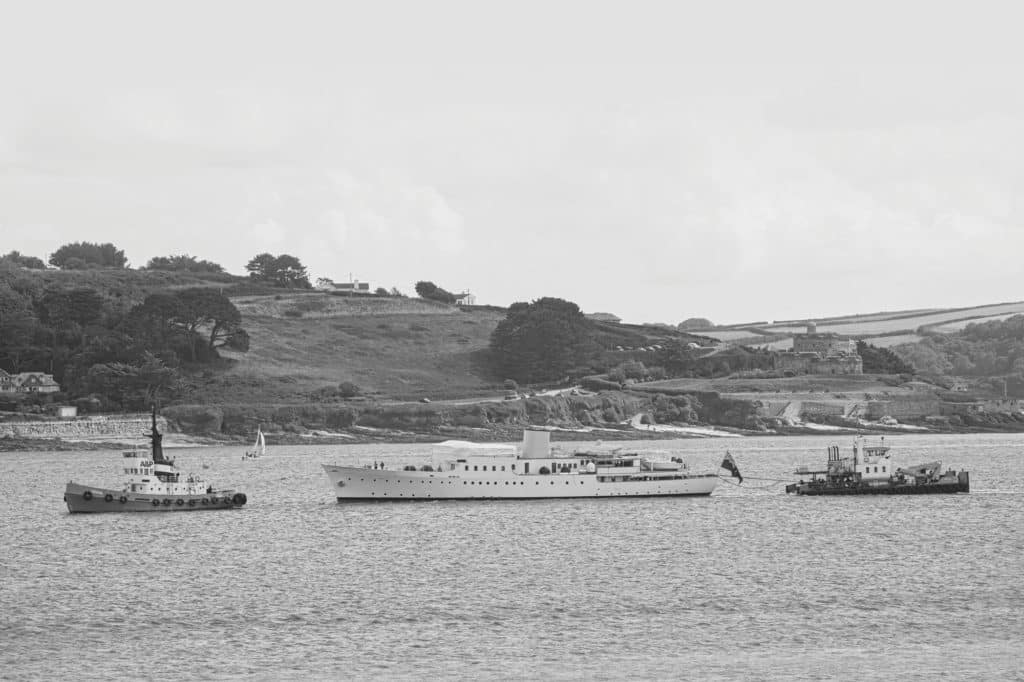
Interestingly, the owner of Ragnar added to his wish list. “The owner had a lot of innovative and creative ideas,” de Haas says, which also heightened the complexity of the conversion. Icon Yachts took up the challenge, he adds: “You have a very steep learning curve in dealing with a conversion. It’s different than what the industry does with a refit.”
Ragnar is different in her interior approach too. “The owner wanted this shocking contrast between a rough and aggressive exterior and a luxurious interior,” de Haas says. With the design studio RWD, the owner selected diverse looks throughout the yacht (which has heated windows and doors, so they won’t freeze in polar regions). He also wanted accommodations for 16 guests, so they would be comfortable after heli-skiing or zipping around on a Ripsaw ATV.
That yacht may be extreme, but all of these yachts may be extreme in one way or another. And the owners wouldn’t have it any other way.

